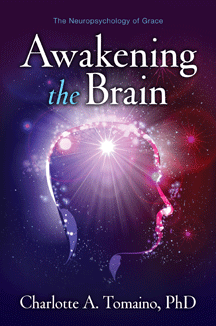Spirit, Mind, & Body Resources for Making Neurochoices
The Creation and Maintenance of Wellness by Dr. Charlotte A. Tomaino
Integrative Medicine
A Neuropsychological Treatment Model
When I give presentations on neuropsychology, the majority of the audience has questions about how our brains function. Whether or not the people I speak to have difficulty with their brain function, they almost always know someone who is affected: people struggling with age-related memory problems, a brain injury, "chemo brain," sports-related concussions, post-traumatic stress disorder, learning disabilities, or failure to reach academic benchmarks like passing the bar exam, just to name a few.
Millions of people are affected by these challenges, and if you are one of them I'd like to use this chapter to describe the unique treatment model I have developed over the years, which has helped people successfully confront their brain limitations. If you are not struggling with your brain function, you might want to skip this chapter, although I would still encourage you to read it if you know of someone who could benefit from your understanding of treatment possibilities or if you yourself are interested in learning more about the ways our brains can grow and change. Even well-functioning, healthy brains have the ability to expand and awaken to greater potential and benefit from the same principles discussed here.
My Approach to Neuropsychological Therapy
When I first started treating brain injury, I had extensive experience in diagnosis and treatment in both graduate school and postdoctoral training. It did not take long for me to see that the complexity of brain injury was beyond my scope as a sole practitioner. That was when I started looking for other professionals who were trained in an understanding of brain function and rehabilitation and had the heart to create a better way to help. It takes a whole village to recognize and participate in this phoenix rising from the ashes. When the whole village comes together, magic happens, and that's what we do at my practice, Neuropsychological Services of Westchester, New York (NSW).
The process of giving a crash course in neuropsychology as part of the treatment, which we discussed in chapter 2, has evolved over time. Back in the 1980s when I started, we knew much less than we do now, and I was initially trained to take a testing approach, for diagnostic and treatment purposes, rather than an educational approach. But over time, I saw how much change occurred just by explaining to my patients things like working memory and cognitive style. Essentially, we are still asking the same questions when patients come to the office with concerns about their brains. Something in cognitive processing is not working well, but now we can do a lot more than just give a diagnosis. We can help patients learn a language to describe, explain, and solve the problem. Science is expanding daily in its ability to explain what it all means and how to work with it.
Although a focus on where you are going is the most productive approach to achieve change, a good starting point is a thorough understanding of where you are. The initial evaluation for sorting out neuropsychological function takes two to three days and includes tasks that engage the language system, the visual system, the motor system, memory, attention, executive functions, academic skills, and personality development. Task performance is compared to others who are the same age so a profile of peaks and valleys emerges. Everyone is better at some things than others.
After the tests are administered and scored, it is time to talk about the findings. The most relevant way of pulling out the value from the data is to focus on the problem under this new lamppost, shining a light and looking for the solutions. This is where the crash course in neuropsychology begins. By discussing how a particular pattern of cognitive strengths and weaknesses produced the problem, we can begin to seeing the solution.
In treating an injury to the brain, there are eight dimensions to grasping the problem, designing the treatment, and making the necessary guidance available to reach a new and happier place in life. The most complex treatment we offer is the neuropsychological model for brain rehabilitation after trauma.
©Tomaino, Charlotte (2012). Awakening the Brain.
New York:Simon & Schuster.

